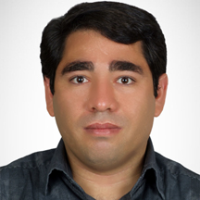The Effect of Textural Groups on the Accuracy of Soil Water Retention Curve Models
Author(s):
Article Type:
Research/Original Article (دارای رتبه معتبر)
Abstract:
Introduction
The soil-water retention curve (SWRC) is the relationship between the soil water content and matric potential of soil water. The SWRC is a fundamental soil characteristic, which is essential to determine parameters of numerous processes in the soil such as infiltration, drainage, solute movement and water availability for plants. It is also a key parameter in the study of the strength and compression of unsaturated soil. Direct field or laboratory measurement of soil water retention is costly, laborious and time-consuming. During the past four decades many models have been introduced to describe soil water retention curve, but their fitting capability in different textural groups have rarely been investigated. A good mathematical representation is the model that reduces the discrepancy between the observed and predicted data. Therefore, the aim of this study was to evaluate the ability of 10 SWRC models in fitting to the experimental data and determine the best model among them for the SWRC of all soil samples and for each soil textural groups in the entire soil water range, near saturation to near oven dryness.
Materials and Methods
In this study, 145 disturbed and undisturbed soil samples were taken from top soils and subsoil's of Guilan, Hamedan and Kermanshah provinces from different depths and were classified into textural groups after textural measurements. Water content were measured at 12 matric potentials. The SWRC models were fitted to the observed SWRC data of 145 soils using an iterative nonlinear optimization procedure. The latter finds the values of the fitting parameters giving the best fit of the model to the data. The optimization procedure was applied using the least square curve fitting toolbox of the MATLAB software to find the values of the fitting parameters. The coefficient of determination (R2) and root mean square error (RMSE) were used as relative measures of the goodness-of-fit of the SWRC models to the experimental data. Corrected Akaike information criterion (AICc) that imposes penalties for additional fitting parameters was used to compare the quality of models fitting.
Results and Discussion
The results showed that the Fredlund and Xing model in all soil samples and as well as in the coarse-textured group, the Libardi model in the fine-textured group and the Brutsaert model in the moderate-textured group had the most accurate fitting results, but their differences were not significant P <0.05 in the all soil samples and each of textural groups. The Brutsaert and Fredlund and Xing models provided a continuous mathematical function for the entire SWRC. The better performance of these models may be due to their physical basis that could describe the SWRC accurately. On the other hand, the parameters of the Libardi model can affect and control the slope and the position of the SWRC in all three areas, including the capillary saturation, de-saturation and residual saturation and the effect of one parameter can be easily distinguished from the effect of the another parameter. Also, according to parametric study of the Libardi model, it can well simulate the break point of the air entry value. Although the fractal models have physical and mathematical basis, they do not have the adequate flexibility to describe the SWRC. A poor performance of fractal models in the present study may be was due to terms of “3-D” (the result of this term was less than one). Therefore, fractal models were not successful in predicting the sigmoid shape of the entire SWRC. Fermi and Tani models with exponential functions had weakest performance. The poorer performance of the Fermi and Tani models in the present study may be due to lack of convergence of their parameters. It is generally accepted that the lack of convergence of parameters is an indication that the data cannot be fitted to the model well.
Conclusions
Comprehensive comparisons of SWRC models will be of value to future model users, but it is important to note that such comparisons will remain dataset dependent. In other words, these results can help the users to choose SWRC models for fitting to the experimental data accurately in case there are limitations to the number of matric potential-water content measured points. Finally, the Libardi model is introduced as the best model for representing the wide range of the soil matric potentials due to the lower number of parameters, the physical concept of the parameters, and the simple form of its equation.Keywords:
Language:
Persian
Published:
Journal of water and soil, Volume:33 Issue: 1, 2019
Pages:
131 to 146
magiran.com/p1974864
دانلود و مطالعه متن این مقاله با یکی از روشهای زیر امکان پذیر است:
اشتراک شخصی
با عضویت و پرداخت آنلاین حق اشتراک یکساله به مبلغ 1,390,000ريال میتوانید 70 عنوان مطلب دانلود کنید!
اشتراک سازمانی
به کتابخانه دانشگاه یا محل کار خود پیشنهاد کنید تا اشتراک سازمانی این پایگاه را برای دسترسی نامحدود همه کاربران به متن مطالب تهیه نمایند!
توجه!
- حق عضویت دریافتی صرف حمایت از نشریات عضو و نگهداری، تکمیل و توسعه مگیران میشود.
- پرداخت حق اشتراک و دانلود مقالات اجازه بازنشر آن در سایر رسانههای چاپی و دیجیتال را به کاربر نمیدهد.
دسترسی سراسری کاربران دانشگاه پیام نور!
اعضای هیئت علمی و دانشجویان دانشگاه پیام نور در سراسر کشور، در صورت ثبت نام با ایمیل دانشگاهی، تا پایان فروردین ماه 1403 به مقالات سایت دسترسی خواهند داشت!
In order to view content subscription is required
Personal subscription
Subscribe magiran.com for 70 € euros via PayPal and download 70 articles during a year.
Organization subscription
Please contact us to subscribe your university or library for unlimited access!




